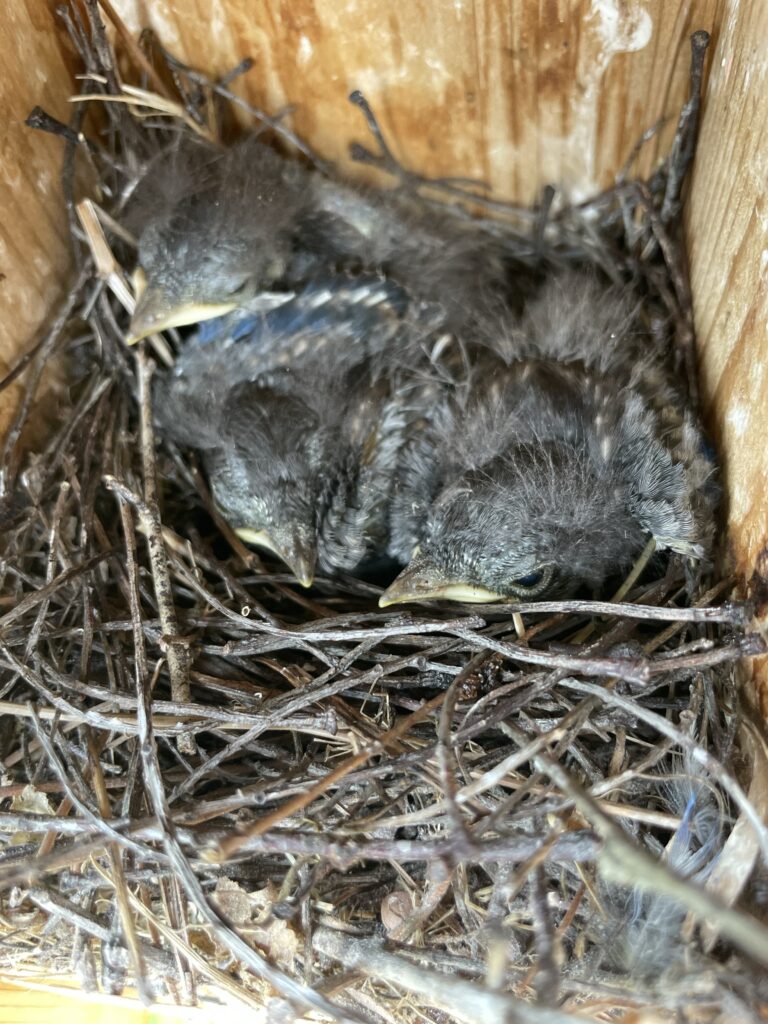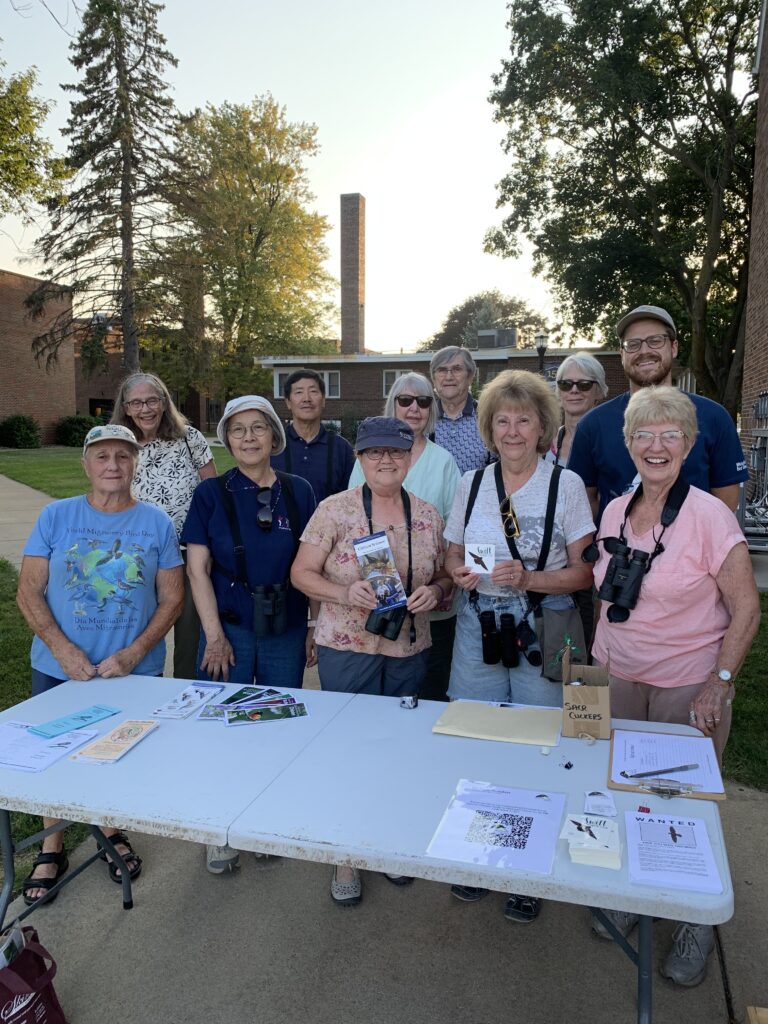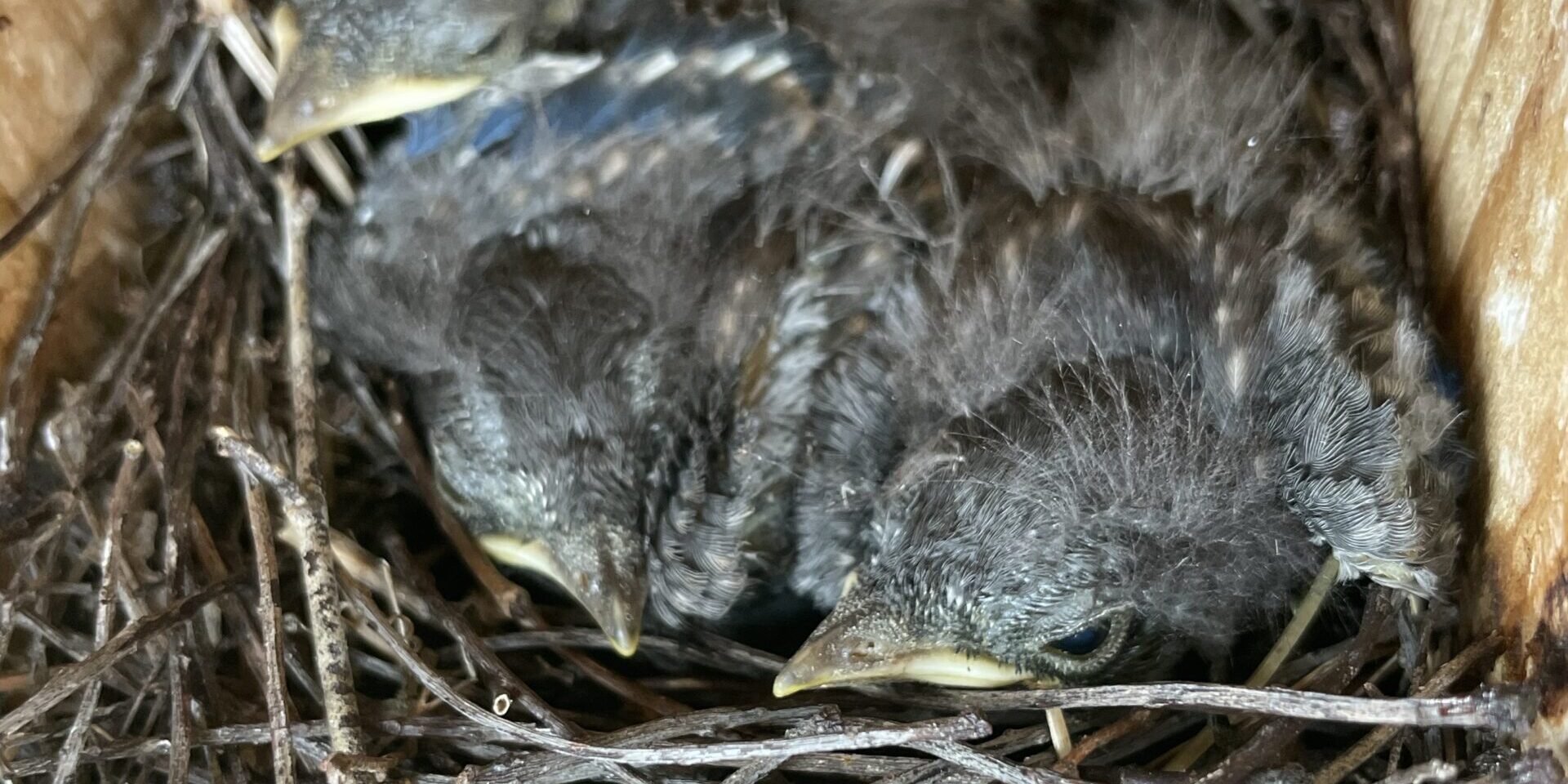Conservation Manager Chad Machinski, M.S., manages the stewardship of MA’s sanctuaries and engaging with our dedicated volunteers ever since. To help you stay connected with the work being done, he will be presenting regular online updates about activities going on at them: birds seen or heard, conservation work, improvements, interesting plants, and more.
Nesting season has ended, and migration has begun. Hopefully, the birds who arrived this spring had successful nesting seasons and are migrating, some just a short jaunt and others a long journey, with new young not too far behind. I’ll briefly mention our Martha Mott Sanctuary as an example, where the end of nesting season and the beginning of migration feel like such defined lines, even though they are not. Shortly after my last conservation update, Eastern Bluebirds in a new nesting box (thanks to the Michigan Bluebird Society) wrapped up their third brood for the season, with an estimated fledge date of August 18. This means that single box fledged 10 bluebirds over the course of the whole season, with about 7–10 days in between one nest fledging and a new egg being laid. That same day, nest box monitor and Michigan Audubon member Derek Haroldson eBirded 26 species of birds at the sanctuary. One week later, Derek recorded 42 species of birds, a 61% increase. What a difference a week can make!

Photo of Eastern Bluebird chicks, approximately 1 week before fledging. This was the last of three broods this box supported. Photo by Derek Haroldson
CHIMNEY SWIFTS
The Chimney Swift is one species that can make a big show of its migration. On August 24, Michigan Audubon held a Swift Night Out in Lansing at Smith Floral & Greenhouse, hoping to catch swifts entering the well-known chimney on the property. We had an amazing turnout of people from the Capital Area Audubon Society, Michigan Audubon, the East Lansing Public Library Birding Club, and other interested people; however, the swifts did not get the memo. Unfortunately, we only were graced with a flyby of about five birds, none of which entered the chimney. Although no swifts showed, it was a great educational experience for those who attended, who had little knowledge of these great birds before the event.
While I was disappointed in how the Lansing Swift Night Out turned out, I had one more opportunity at redemption the following evening in Spring Arbor. A chimney on the Spring Arbor University Campus is a known roosting site, first reported by Jackson Audubon Society Vice President Gary Mason. Unfortunately, the building to which the chimney is attached is slated to be torn down in the near future. Gary suggested having a Swift Night Out there this year, and I was more than happy to assist. Right upon my arrival, swifts were heard and seen flying around campus, immediately making me feel like this evening was going to be a success. Members of the Jackson Audubon Society and I, several of us with clickers in hand, watched as swifts began to descend into the chimney, with frequent “oohs” and “ahhs” as we tried not to count the birds making false passes at the chimney. By the time the last straggler wandered into the chimney, between three counters, we determined approximately 170 swifts went into the chimney. It is my hope that we can find a way to construct another structure to substitute for this chimney when it is inevitably torn down. Fortunately, the university is aware of its use and seems interested in finding ways to continue to help swifts.

The chimney on Spring Arbor University campus appears behind Jackson Audubon Society members and MA Conservation Manager Chad Machinski. Photo by Gary Mason
Swift migration will continue through September, so please make it out to a nearby chimney to count! You can use Michigan Audubon’s Roost and Nest Maps to find a chimney near you, or if you know one that’s not on the map, you can add it! You can find all reporting forms through our Chimney Swift Conservation page. If you’re watching for swifts at a chimney at this time of year, you’ll want to use the “Submit Confirmed Roost Survey Data.”
PURPLE MARTINS
While Chimney Swifts are still moving through, we are at the tail end of Purple Martins being in Michigan, with most eBird reports in Southeast Michigan. If you are a Purple Martin landlord, you can now submit a brief nest summary of how your colony did this year. We are looking for how many nesting pairs, eggs, and fledged birds your colony had. Please take a brief minute to fill out the End of Season Nest Reporting Form if you happen to be a Purple Martin landlord.
PRESCRIBED BURNS
This fall, we will again have prescribed burns at Otis Farm Bird Sanctuary in Hastings and Bernard W. Baker Sanctuary in Bellevue. Getting fire onto these lands is one of the most important things we can do to manage these grasslands, and I’m excited that we can burn again this year. In time, we will likely not have prescribed burns every year but instead be going longer intervals and burning larger units at a time. Currently, we have a significant amount autumn olive on the property that needs to be removed or reduced first so that we can ensure that any prescribed fire can carry well through a unit.
To learn more about Michigan Audubon sanctuaries, visit michiganaudubon.org/conservation/bird-sanctuaries. If you want to volunteer at a Michigan Audubon sanctuary, please complete the Sanctuary Volunteer Interest Form.

Chad Machinski, MS
Conservation Manager
While Chad’s first love is botany, he doesn’t deny the intertwining nature of birds, plants, insects, and all other organisms we share the world with. His passion for the natural world began in his undergraduate time at the University of Michigan, taking several different forms along the way. His graduate studies at the University of Michigan allowed him to more closely examine the natural communities of Michigan and further understand the complex nature of ecosystems. His work as a Nichols Arboretum Caretaker while in school further enabled him to be directly involved in conservation work as he led workdays removing invasive plant species, performed trail maintenance, and guided tours. Chad can usually be found out in a park in a few ways: binoculars glued to his face, hunched over looking at plants, or flipping logs looking for snakes and salamanders.

